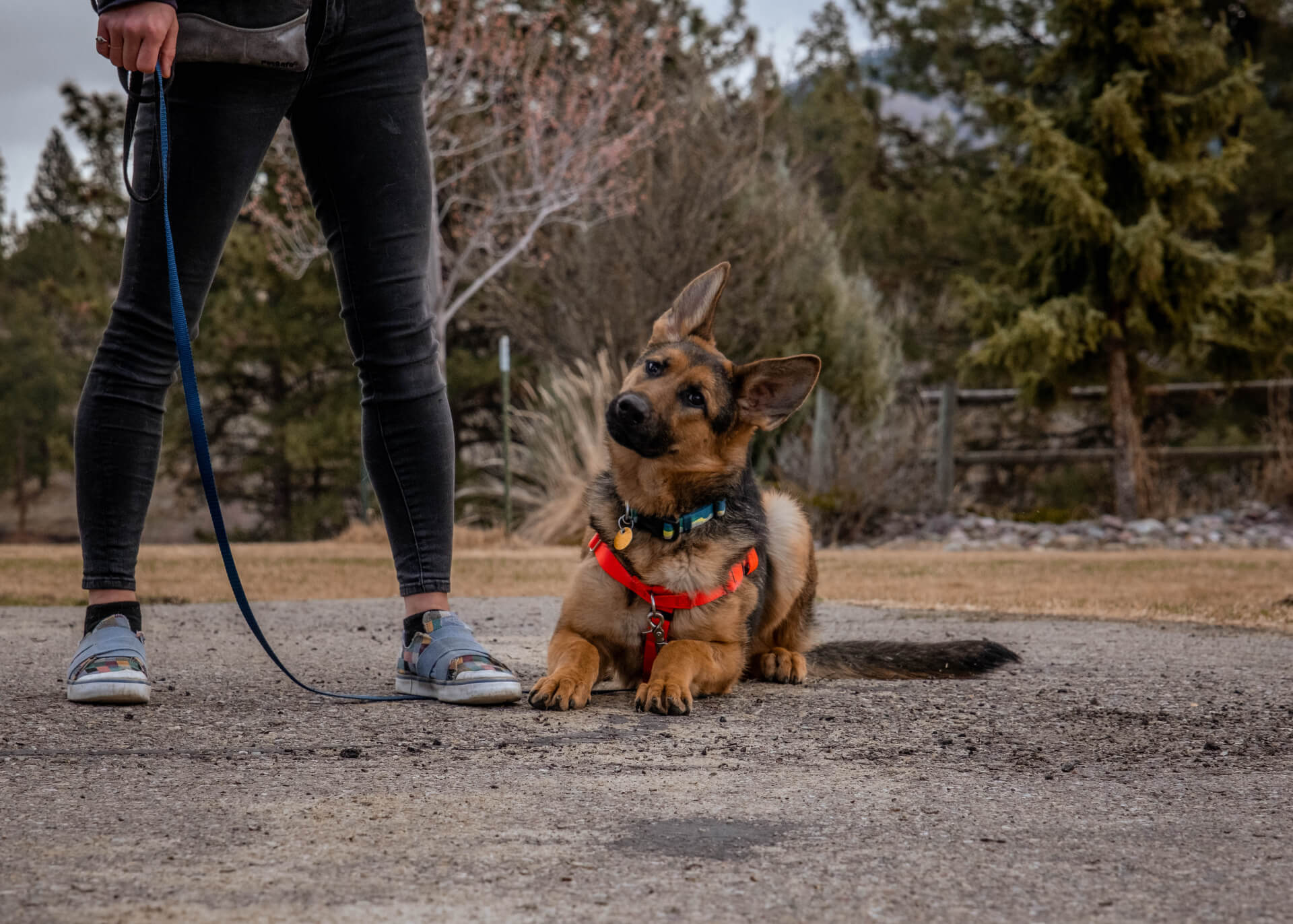
Crate Training Your Adult Dog
Used properly, a crate is an effective tool for managing, transporting, and training your dog. Her crate becomes her den; a special place where she can go to sleep, take a break from kids, or be safely confined any time that she is unsupervised so she cannot practice undesirable behaviors like counter surfing or inappropriate chewing. Crates make housetraining easier because dogs don’t like to soil their sleeping areas so she will naturally avoid eliminating in her crate. When choosing a crate it should be big enough for your dog to stand up, turn around, and fully sprawl out. A crate that is too small, especially for longer periods of time, is not only inhumane but may make crate training harder!
How to Crate Train Your Adult Dog
- The setup – Make your dog’s crate the comfiest spot in the house by providing soft bedding and durable chew toys. We recommend you set the crate up in a dog-proofed space (ex. mud room, kitchen, etc.) so that your dog has access to her crate should she choose to settle in it. Do not provide any additional soft spots so she is encouraged to hang out in the crate. Some dogs may also prefer a more den-like crate and may benefit from an old blanket or sheet draped over the top.
- The introduction – It is important that your dog is comfortable with her crate before you ever shut the door. Locking her in the crate too early in the training process can cause her to fear the crate and possibly lead to injury as she tries to escape it. Dogs learn through association, so you can teach your dog to love her crate by providing wonderful treats and toys in the crate. Let your dog explore her new crate on her own. Do not force her to enter it. Instead, place several treats in the crate periodically throughout the day so that when she does venture into the crate on her own she is rewarded for her curiosity!
- Feeding and Kongs – Feed meals, treats, and chews in your dog’s crate during the training process. You can stuff a food toy with her meal or simply put her food bowl inside the crate. This will teach her that she gets rewarded for going inside the crate. At first, be sure to leave the door open and let her enter and exit on her own. After a few days you can start to shut the door for a few seconds, then gradually increase the time she is in her crate with the door closed.
- Closing the door – Ideally, you would not need to leave your dog inside her crate until she has had time to adjust. That is why it is useful to set her crate up in a dog-proofed space so that she (and your home) is safe during the training process. After a few days of your dog eating meals and finding delicious treats in her crate, you can close the door while she eats and open it after she has finished eating. Then, you can slowly increase the amount of time the door is closed over the next few days. Finally, your dog will be ready to stay in her crate while you take a short trip out of the house. Always be sure to provide a stuffed and frozen kong or other long-lasting food toy to occupy your dog while she is crated.
Things To Avoid
- Using the crate to punish your dog – It is important that your dog views her crate as a good place rather than associate it with punishment or scolding. It is okay to use a crate to separate your dog from the household activity for short time-outs or naps, but do not scold your dog prior to putting them in your crate even if they’ve been practicing undesirable behaviors. Make sure to grab a stuffed kong or chew bone that you know is safe for your dog and lead her to her crate when she needs some quiet time alone.
- Crating a dog for more than 10 hours in any day – Crating a dog for more than 10 hours in a day can be considered inhumane even if she is given bathroom breaks. If your schedule requires you to be away from your dog for long days consider alternatives such as doggy daycare, a hiking/walking company, or a pet sitter.
- Expecting a shortcut to providing exercise – After being cooped up in her crate your dog will need an outlet for her pent-up energy. Be prepared to go for a walk or throw the ball when you get home. Also be sure to provide your dog with mental stimulation in the form of training, games or food toys. Problem-solving mental stimulation is a great outlet for your dog’s energy after sleeping all day in her crate.
